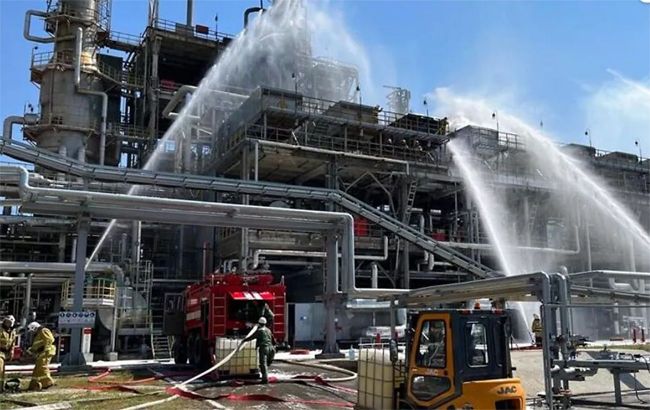Over half of Russia's regions hit by fuel crisis after Ukrainian drone strikes - BBC
 Illustrative photo: Ukrainian strikes have hit 21 of Russia's 38 largest refineries (Russian media)
Illustrative photo: Ukrainian strikes have hit 21 of Russia's 38 largest refineries (Russian media)
At least 57 Russian regions are facing a fuel crisis after Ukraine stepped up drone attacks on oil refineries. That accounts for more than half of Russia's administrative regions, BBC Russian reports.
Russia's gasoline problems began in August. What started as typical seasonal issues quickly escalated into a severe shortage.
The Far East was the first to be affected. The region relies on just two refineries, and fuel began to be rationed through coupons in Zabaykalsky Krai, Primorsky Krai, and Sakhalin.
In temporarily occupied Crimea, the situation is even worse, since all fuel must be imported. Gasoline is already scarce in Russia's "core regions," leaving occupied territories in a dire position. In Crimea, drivers are limited to 20 liters per car — less than a third of a standard fuel tank.
Moscow and central regions have largely avoided shortages. Fuel is still available at gas stations, although some disruptions occur. In other regions, the shortage has triggered a logistical collapse. Without gasoline, suppliers cannot deliver goods or food to remote settlements.
Ukraine is targeting Russian refineries
The fuel shortage is linked to Ukraine's intensified attacks on Russian oil refineries. Since early October, Ukrainian drones have hit at least four refineries, putting them out of operation. There were eight attacks in September and 14 in August.
Since January 2025, Ukrainian drones have struck 21 of Russia's 38 largest refineries, with many targeted multiple times.
From August through late September, at least 10 refineries partially or fully shut down, reducing around 10% of total refining capacity. Some of these plants were export-oriented, but the crisis forced Russia to ban fuel exports.
"The most effective sanctions – the ones that work the fastest – are the fires at Russia's oil refineries, its terminals, and oil depots. To significantly restrict Russia's oil industry is to significantly restrict the war," Ukrainian President Volodymyr Zelenskyy said.
No deficit, only temporary problems
Russian authorities officially blame "logistical difficulties" or "seasonal shortages." However, the Federal Service for State Statistics (Rosstat) reported a 10% rise in gasoline prices since the start of the year.
Officials insist the situation is "temporary," describing the shortage as "minor" and urging citizens to "be patient." Russian state media largely avoids public discussion of the crisis.
The Kremlin is attempting to compensate with Belarusian support. In September, Belarusian gasoline exports to Russia quadrupled. Moscow is also reportedly ready to buy fuel from China and lift import tariffs if Beijing agrees.
Experts say the length of the fuel crisis depends less on how quickly Russia repairs its refineries (a process that could take weeks or months) and more on how frequently Ukrainian drones continue striking oil facilities.
Fuel crisis deepens
Between August and September, 360 gas stations closed across Russia. Currently, one in every 50 stations no longer sells fuel. To address shortages, Russia extended the fuel export ban through the end of October.
On October 8, restrictions were introduced in Tyumen and Sverdlovsk regions, following earlier measures in Chelyabinsk, Novosibirsk, and temporarily occupied Crimea. Fuel issues have also been reported in Komi and the Far East.

